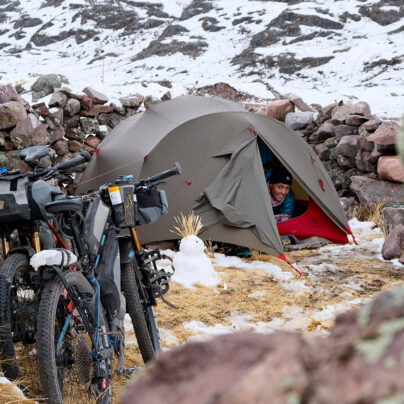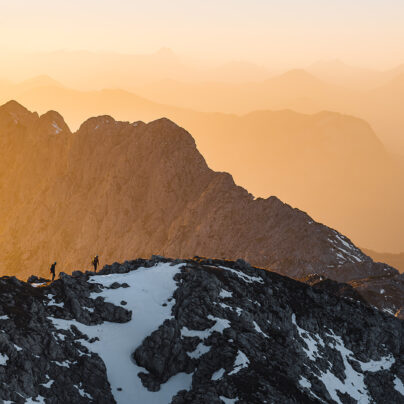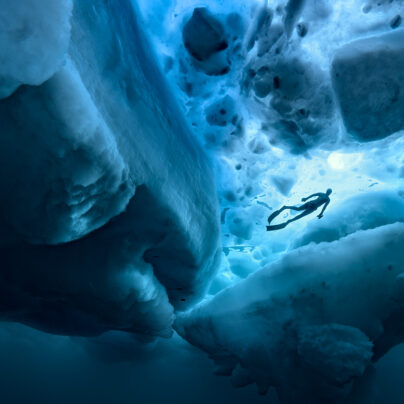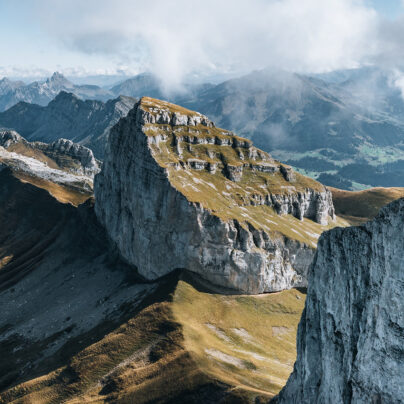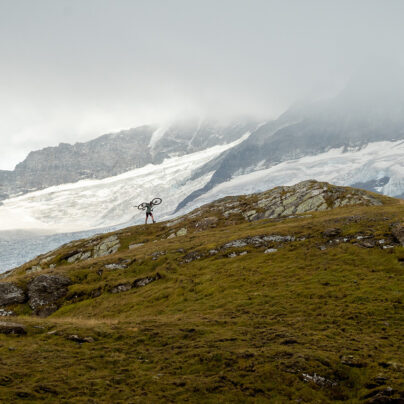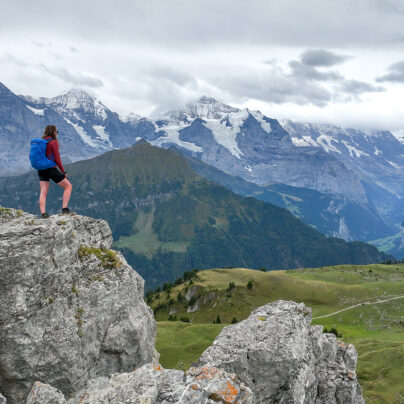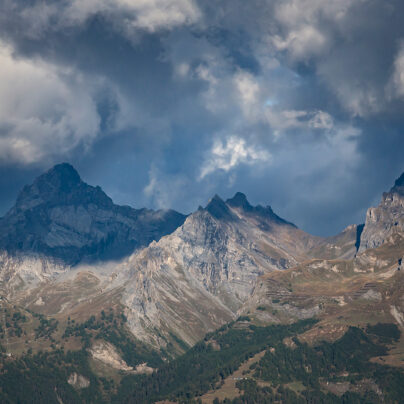The Classic Haute Route
Andrew Mazibrada
In bed, I stare for much of the night at the ceiling of the small dortoir we have to ourselves. I am secluded in a corner but my sleep is patchy and capricious. This restlessness is as a consequence of Cheyne Stokes breathing and the story we were earlier told of a fall by a guided group on La Serpentine yesterday, the precise route we intend to take. The former, a function of the altitude, means I wake up and have to will myself to take deep, frayed pants to calm my lungs. At the Chanrion Hut, I was unnerved but now I just want to get back to sleep. The fall on La Serpentine is something different. Alpinism is not a carefree undertaking – it can be dangerous. I had thought I understood but the accident threw into stark relief the primary issue involved in responsible alpinism – know the people you are roped to. In the end, if one of you falls, you all fall. Nothing will stop you on a glacier so when you ask, as I once did, what you do in event of a fall – the answer is simple: don’t fall.
I rise early. Everything I need is within easy reach for the morning and everything else is packed. By 4.30am I am eating breakfast and by 5am and I am outside the Dix hut, in my harness and shrugging on my pack. The atmosphere is circumspect. For the first part of the ascent, I have stowed my camera and GPS. Now is not the time for distractions – now is the time for assiduous, single-minded concentration.
In the early morning half-light, clambering over boulders onto the Glacier de Cheilon, the tension is palpable. A barked rejoinder when one of us flashes another in the face with a head torch betrays the mood. We rope up quietly, checking and re-checking equipment. I gaze up at the ascent and run the permutations through in my head. In reality, good technique is all that is needed here – this is not a technical route. As we move off, I vary between American and French as needed, every movement calculated. The weather is perfect – not a cloud in the sky and little in the way of wind. From time to time, I steal glances at the panorama surrounding us and, in truth, this is without any doubt one of the most thrilling, inspiring days I have spent in the mountains.
The weather is perfect – not a cloud in the sky and little in the way of wind. From time to time, I steal glances at the panorama surrounding us and, in truth, this is without any doubt one of the most thrilling, inspiring days I have spent in the mountains.
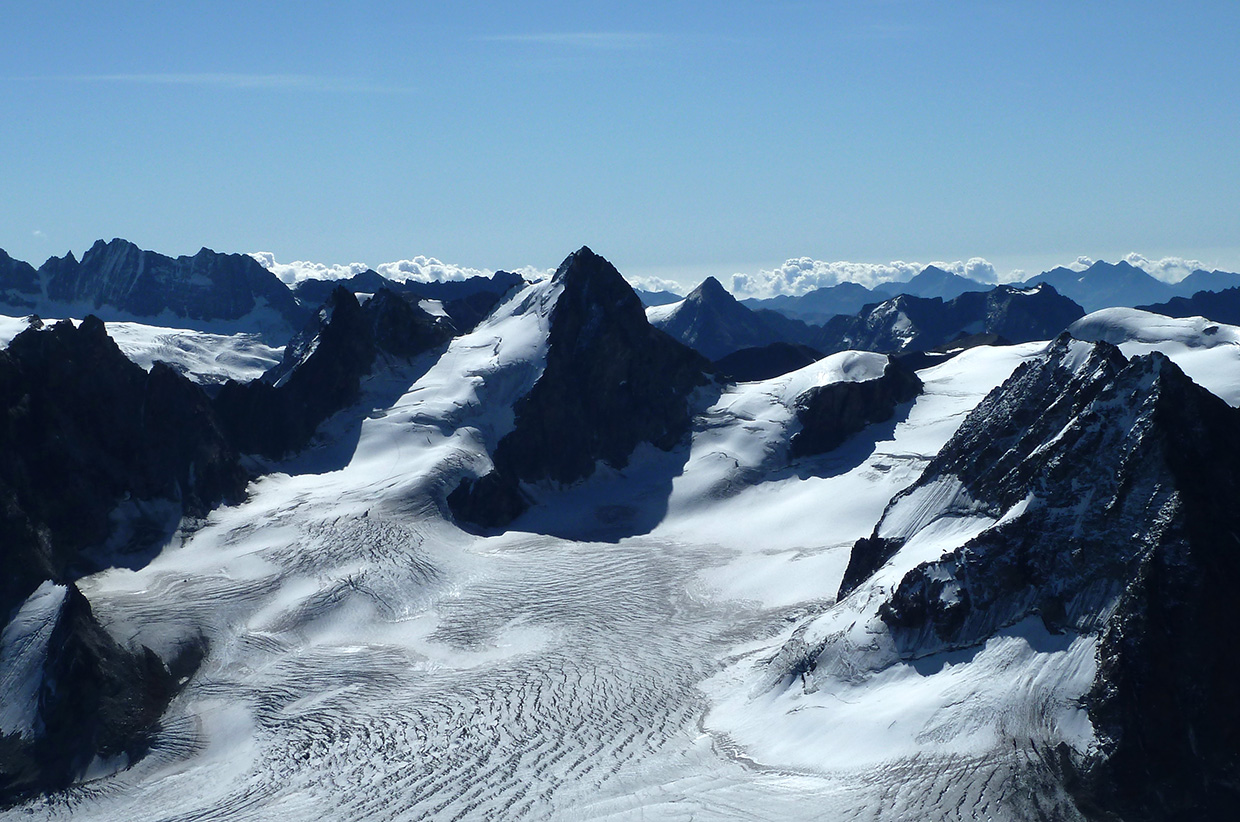
The descent to the Vignettes Hut take us over more moraine and crampons are shoved away in favour of the grip of a boot. At the hut, we again we gorge on rösti and swill beer. I sit in the sun for hours and delight in a moment – a crux day.
After what seems an eon, we reach the diminutive tabletop that is the summit of the Pigne. At 3,796m, I have never climbed higher and the panorama surrounding us is at once breathtaking and rewarding. I am too exhilarated to sit, so I turn on the spot to take in everything around me. I can see the Matterhorn’s jagged silhouette in the distance, as well as the Dent Blanche and countless others. Mont Blanc de Cheilon seems now only a short hop away. I am again surprised by how far away the Matterhorn seems – we will be in its foothills within 48 hours.
The descent to the Vignettes Hut take us over more moraine and crampons are shoved away in favour of the grip of a boot. At the hut, we again we gorge on rösti and swill beer. I sit in the sun for hours and delight in a moment – a crux day.
The next day is a long, arduous journey to the Bertol Hut, well above 3,300m. The sun shines high in the sky and when we finally arrive, we are exhausted. We’ve had it our way throughout the trek but we know a weather front is following us and during the night, it hits. At around 4am, I experience the impossible to ignore urge to relieve myself. I make my way to the outside toilets and within seconds I am overtaken by a blizzard. Snow dots my jacket, shrugged on as I knew where it was hanging up, and my cotton boxers. As I perform the necessary, the weather makes its feelings known. I have no idea if we’ll be able to leave today.
Within what feels like moments of getting back into bed, I hear our alarm going off. The guides are all deep in discussion. This results in us getting back into bed until the weather clears – we hope for a break within an hour. I irritably pull out my Kindle – I don’t fancy another 24 hours at the Bertol. Around 7am we are given the green light. The descent from the hut involves, just like the ascent yesterday, yet more ladders, slick with wet snow, and then a narrow path which hugs the mountainside – chains are essential as the path just about takes a boot.

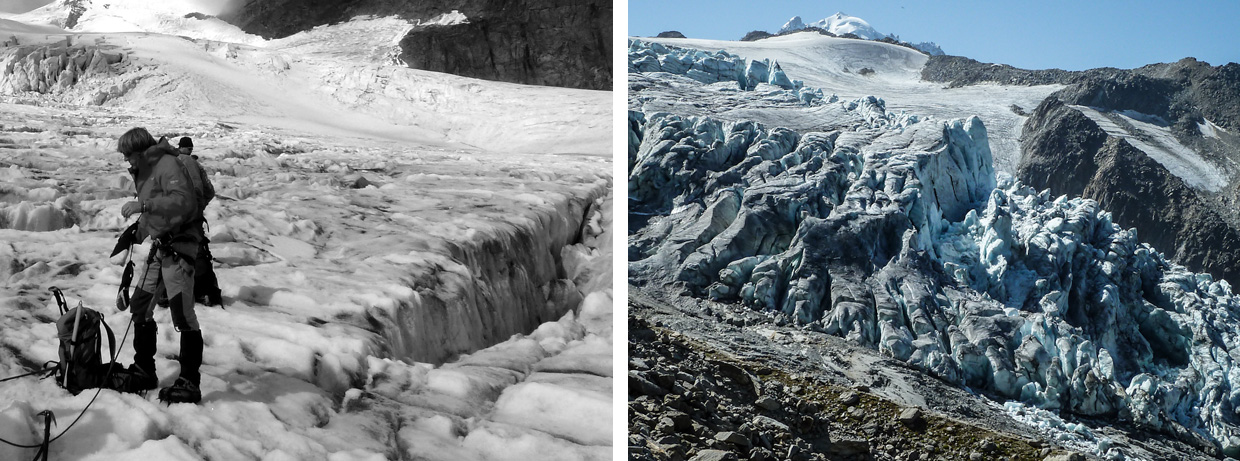
I can see the Tête Blanche in the distance. That is the problem with high alpine routes – the summits are easily seen but the snow and glacial terrain is such an energy-sapping endeavour that they may as well be miles away.
The ascent of the Tête Blanche is a simple matter of one foot in front of the other, but it is a force of will required to keep going in deep snow. In addition to that, I am hauling the man behind me who is losing fitness fast. As I bleed energy into the snow, through gritted teeth dragging my own body and his, my own pack and his 60 litre monster, I entertain murderous thoughts. We reach the summit swathed in cloud and wind and we see nothing at all but the summit cairn and cross. We do not tarry and as we descend, taking altimeter readings for navigation, we drop out of the cloud. The view I have then is, without a doubt, one of the most striking and vivid I have witnessed for a very long time. The Matterhorn, at once malevolent ogre and yet somehow regal, sits waiting for us overlooking the valley leading to Zermatt. The Stockji glacier, and the Stockji itself are on show, goading us to take them on. All framed by the same coal-black purgatory veiling the Val d’Anniviers.
We press on, moved by this drama. The descent is classic deep snowdrift – sinking and stumbling as boots and gaiters vanish into the snow. Soon we are on the Stockji Glacier, heavily crevassed with yawning, chasmic scars in the icy terrain. We carve a complicated, switchback route across the glacier – there is a path of sorts, movement of others before us, and we follow it for a while, but it is difficult to see at times and we must make our own choices. Eventually, we hit the edge of the glacier where it meets the Stockji itself – a moraine monster that we must climb and circumnavigate. We abseil down the shelf of the glacier and onto rock.
The Stockji is a scrambling paradise and we are hands on almost all the way. It is something of an impromptu playground and when we reach the end, we are disappointed by a ridge leading down simply but treacherously, on shifting ground, to a mass of boulders stretching for what seems like an interminable distance. It is depressingly fitting that the final shinny should be across the decaying mountainside.
When we eventually reach the Schönbielhütte there is a sense of genuine achievement. This is not the end, Zermatt is three easy hours away, but the hard stuff is done. The worst I can do is stub my toe on a mushroom tomorrow. Now I want a beer.
We drop out of the cloud. The view I have then is, without a doubt, one of the most striking and vivid I have witnessed for a very long time. The Matterhorn, at once malevolent ogre and yet somehow regal, sits waiting for us overlooking the valley leading to Zermatt.

Andrew Mazibrada is an adventure travel and outdoor writer and photographer. He is a member of the Outdoor Writers and Photographers Guild and is Joint Editor for Sidetracked.
